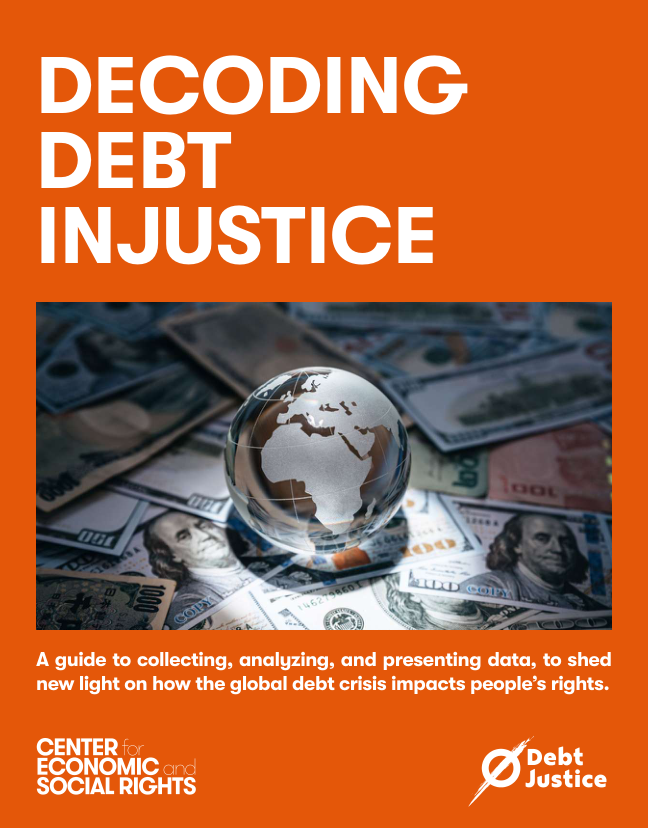The inability of Global South countries—which include the continent of Africa—to achieve sustainable development goals in the face of rising debt levels, requires financial resources which the current Global Financial Architecture (GFA) doesn’t allow many to meet.

This was the assessment made by economists Dr. Abel Gwaindepi and Dr. Amin Karimu who also wrote about the “reforms” needed to address the problem.
Many African leaders see the current GFA “as rooted in colonialism and there (being a) need for fundamental reforms, including … new and alternative institutions,” the men wrote in an analysis published on europarl.europa.eu, the website for the European Parliament.
Dr. Gwaindepi is a senior researcher and economist at the Danish Institute of International Studies and Dr. Karimu is a senior researcher and professor of economics at the University of Cape Town.
A case in point is Kenyan President William Ruto, who according to the BBC, had to borrow $7.6 billion, he said, just “to be able to run our government.” This was in the face of a “rejection” in the form of mass protest of a “hugely unpopular finance bill that was going to raise more money in taxes,” reported the BBC.
Immediate criticism of the president’s latest plan, also came from Kenyan economist Odhiambo Ramogi who told the BBC that it was not necessary or prudent to borrow more as this would put Kenya in “a greater position for debt distress.”

The proposed tax measures were supposed to cut the country’s debt burden of over $80 billion. Sixty percent of Kenya’s collected revenues go toward servicing debt.
Many African nation-states continue to face challenging sovereign debt.
According to Conversation.com, “Total external debts as a share of Africa’s export earnings increased from 74.5 percent in 2010 to 140 percent in 2022.
In 2022, African governments had to allocate about 12 percent of their revenues to servicing their debt. Between 2019 and 2022, 25 African governments allocated more resources servicing their total debts than to the health of their citizens.”
Dr. Ndongo Samba Sylla is the Senegalese Africa Director for Research and Policy at International Development Economics Associates and the co-founder of the African Economic and Monetary Sovereignty Initiative International Development Economic Associates (IDEAS).
“In the case of the countries of the (Global) South (Africa included), their lower degree of monetary sovereignty reflects a lack of control over their real resources (often stolen by transnational corporations, leading sometimes to the need to issue debt in foreign currencies at high interest rates) and the pursuit of an economic model—extractive in nature—which further reinforces their need to hold U.S. dollars, given that the international payments system has hitherto been organized around the U.S. dollar,” he explained during a March 13 interview on networkideas.org.

The International Conference on the African Debt Crisis was held in Accra, Ghana, earlier this Spring and was co-organized by Dr. Sylla.
In reflecting on the substance of the conference, he wrote that developing countries are being blamed for having borrowed and spent irresponsibly. “But they have only been doing what foreign powers and financial interests have urged them to do.”
He explained how, historically, America benefits from this GFA. “The U.S. sells Treasury dollar bonds to the world but does not face the pressures others face to repay debts denominated in other currencies.
Dollar liquidity thus meets international demand for USD. Federal government expenditure supplements private spending, with both eventually finding their way into private bank accounts,” he wrote.
Dr. Sylla added, “Foreign capital is usually seen as necessary to supplement inadequate domestic investments.” For example, he wrote, “Much higher interest rates in developing countries may encourage borrowing and investment from abroad. However, heavy reliance on foreign finance is more problematic.”
Servicing external debt drains foreign exchange resources, eventually causing national currencies to depreciate. Meeting foreign liabilities—including returns to foreign investments and external debt servicing—may require more foreign borrowings, he noted.
“Central banks of creditor nations have long bought low-risk U.S. Treasury bonds. Indeed, current account surpluses make them net exporters of capital: they pay off external liabilities and make other payments abroad without incurring foreign debt,” Dr. Sylla continued.
Unlike developed nations like the U.S., developing countries with recurring account deficits are often encouraged to go into debt, bearing the higher costs of accessing foreign-denominated finance.
Hence, Dr. Sylla noted, “Developing countries are seen as ‘creditors of safe assets’ (U.S. Treasury bonds) offering low returns but ‘debtors of risky assets’ promising higher returns.”
To learn more about debt injustice and its impact visit the website for the Center for Economic and Social Rights 2023 online guide “Decoding Debt Injustice.”













